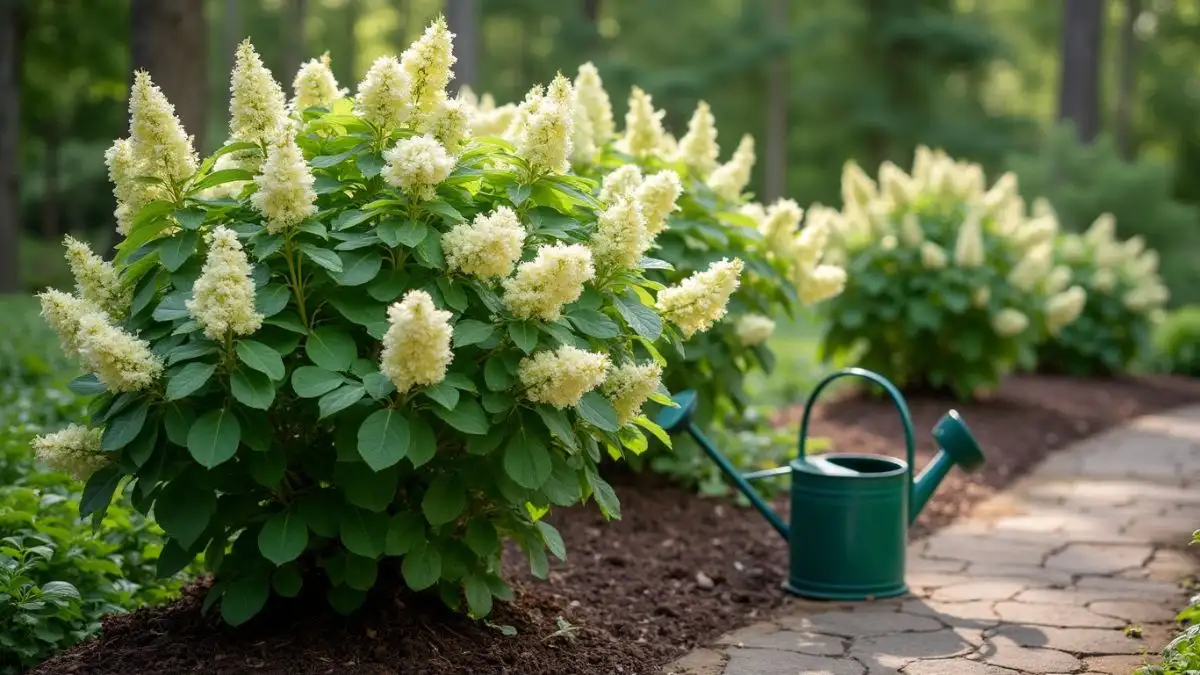Turning your garden into a vibrant oasis is simpler than you may imagine. If you’re looking for a low-maintenance, fast-growing shrub that adds beauty, fragrance, and privacy, Viburnum odoratissimum, commonly known as sweet viburnum, is the perfect choice. This evergreen shrub is popular for its dense foliage, fragrant white blooms, and versatility in the landscape. Whether you are looking to create a viburnum hedge, enhance your flower beds, or add privacy to your garden, this plant has you covered.
In this comprehensive guide, you’ll discover 7 incredible tips for planting Viburnum odoratissimum successfully. With these practical insights, you’ll be able to plant and nurture your sweet viburnum with confidence, ensuring a thriving, beautiful addition to your garden.
Table of Contents
Why Choose Viburnum Odoratissimum for Your Garden?
Before diving into planting, let’s take a closer look at what makes sweet viburnum so special.
- Beautiful Aesthetics: Sweet viburnum boasts glossy, dark green leaves, fragrant white flowers, and a pleasing overall appearance. It’s perfect for landscaping, offering a mix of beauty and utility.
- Low Maintenance: Once established, sweet viburnum is highly resilient and requires minimal care, making it an ideal choice for novice gardeners.
- Quick Growth: This plant grows rapidly, reaching heights of up to 15-20 feet, making it perfect for creating a viburnum hedge or privacy screen in no time.
The 7 Incredible Tips for Planting Viburnum Odoratissimum
1. Choose the Perfect Location
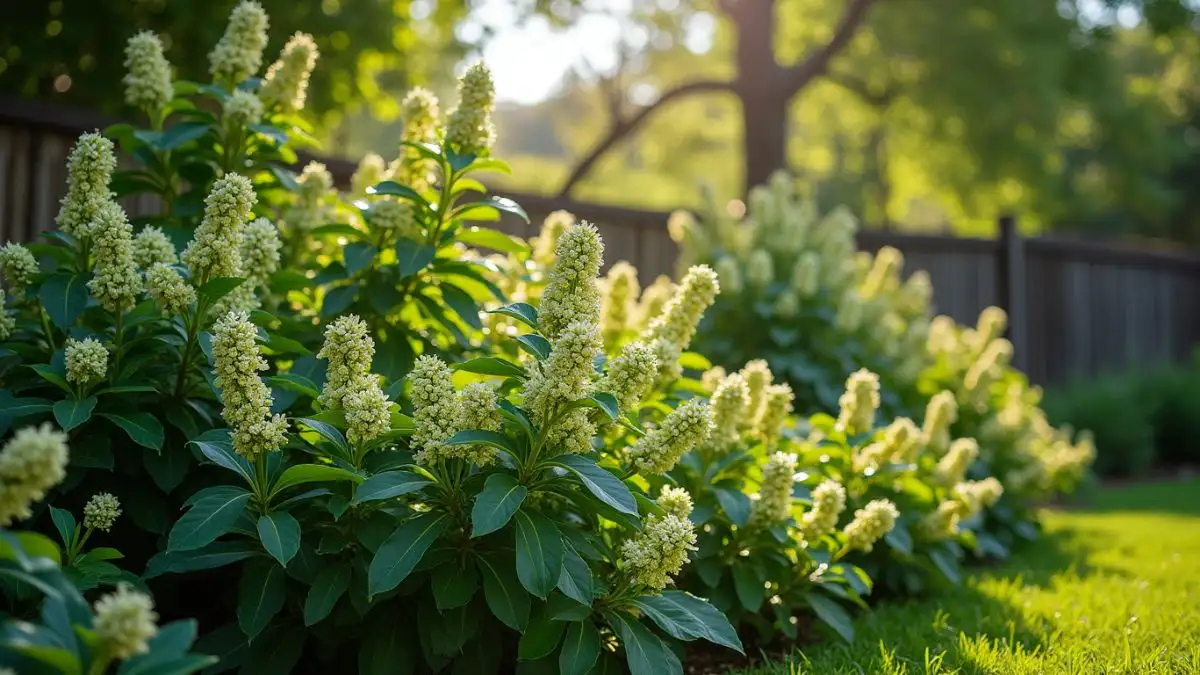
The success of your sweet viburnum starts with the right planting spot.
- Light Needs: Sweet viburnum flourishes in full sun but can also tolerate some partial shade. For optimal growth and blooming, aim for 6–8 hours of sunlight each day.
- Space for Growth: For a viburnum hedge, plant each shrub 4–6 feet apart. If planting as a standalone feature, ensure enough space for the plant to reach its full width of 10–15 feet.
- Protection from Wind: In areas with strong winds, plant near a fence or wall to shield your shrubs.
2. Prepare the Soil Properly
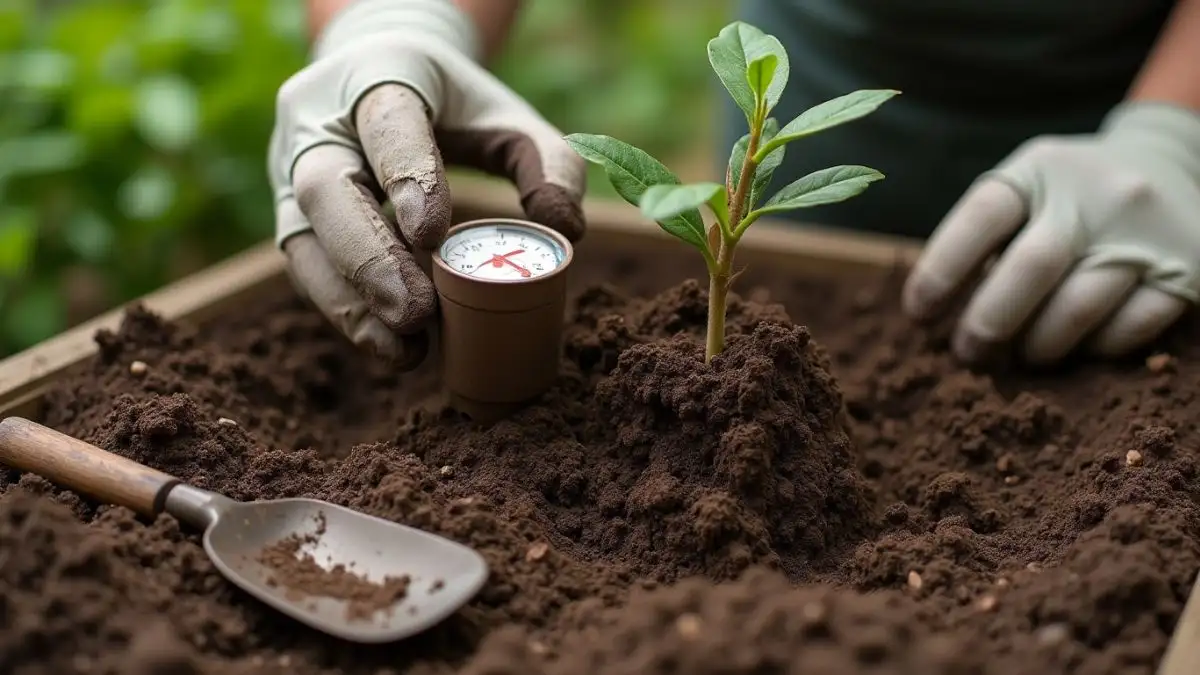
Healthy soil is the foundation of a thriving Viburnum odoratissimum.
- Soil Type: Viburnum grows best in well-draining, loamy soil. Heavy clay soil should be amended with compost to improve drainage.
- pH Levels: Aim for slightly acidic to neutral soil with a pH between 6.0 and 7.5. You can test soil pH with a home kit from your local garden center.
- Enrich the Soil: Mix organic compost or well-rotted manure into the soil before planting to provide essential nutrients.
3. Timing is Everything

Knowing when to plant is critical to giving your Viburnum odoratissimum a strong start.
- Best Planting Seasons: Early spring or fall is ideal, as cooler temperatures reduce transplant shock.
- Avoid Extreme Conditions: Don’t plant during frost or the peak heat of summer.
4. Master the Planting Process

Follow these steps to ensure your Viburnum is planted correctly:
- Dig the Right Hole: Create a hole twice the width and equal to the depth of the root ball.
- Position the plant carefully, ensuring the top of the root ball is level with the soil surface.
- Backfill carefully with a mixture of native soil and compost, pressing gently to remove any air pockets.

5. Water Strategically
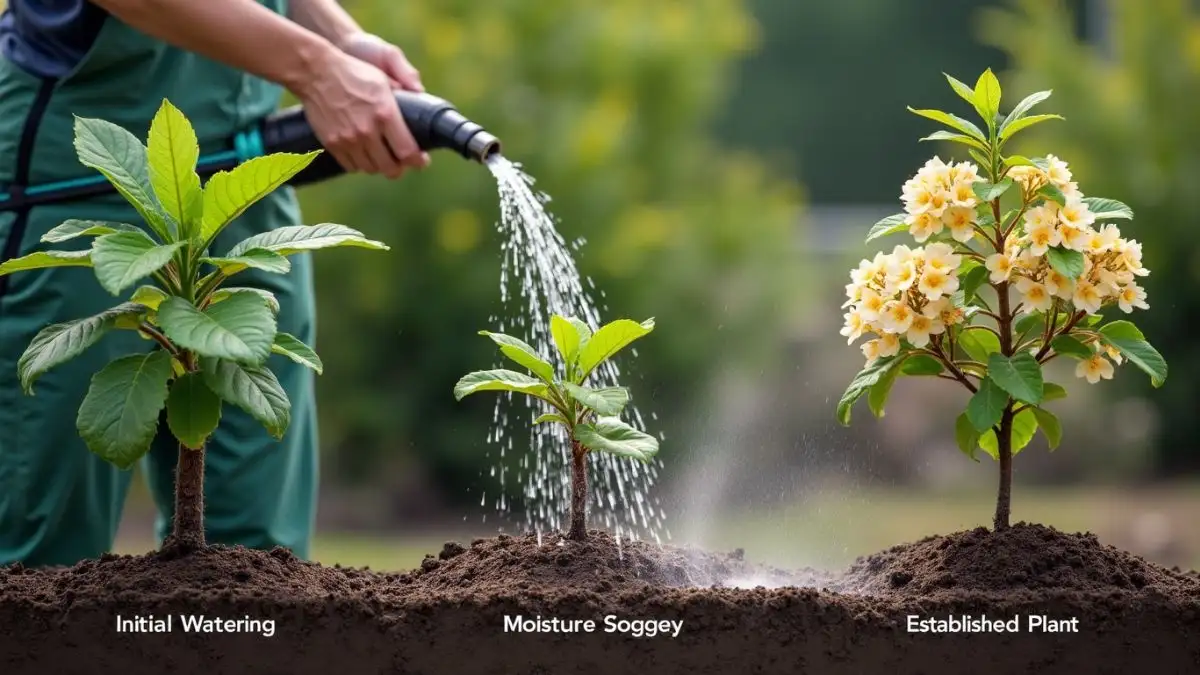
Regular watering is essential in the initial months following planting.
- Initial Watering: Water deeply 2–3 times per week for the first 2–3 months.
- Long-Term Schedule: Once established, Viburnum is drought-tolerant and typically needs watering only during prolonged dry periods.
- Avoid Overwatering: Ensure the soil remains moist but not waterlogged, as soggy roots can lead to rot.
6. Mulch for Moisture and Health
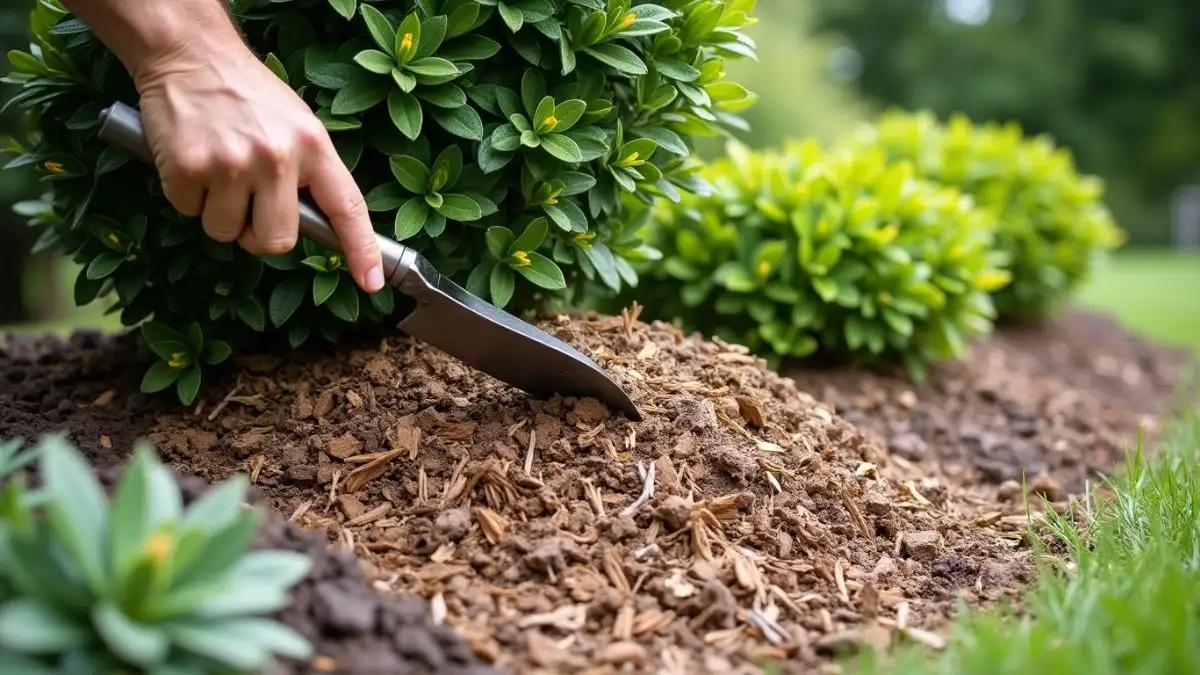
Mulching is one of the easiest ways to protect and nourish your Viburnum.
- Apply Mulch Around the Base: Spread a 2–3 inch layer of organic mulch, such as wood chips or straw, around the base of the plant.
- Keep the Trunk Clear: Leave a 2-inch gap around the trunk to prevent rot and pests.
- Benefits of Mulch: Mulch helps retain soil moisture, regulates temperature, and suppresses weeds.
7. Provide Proper Nutrients
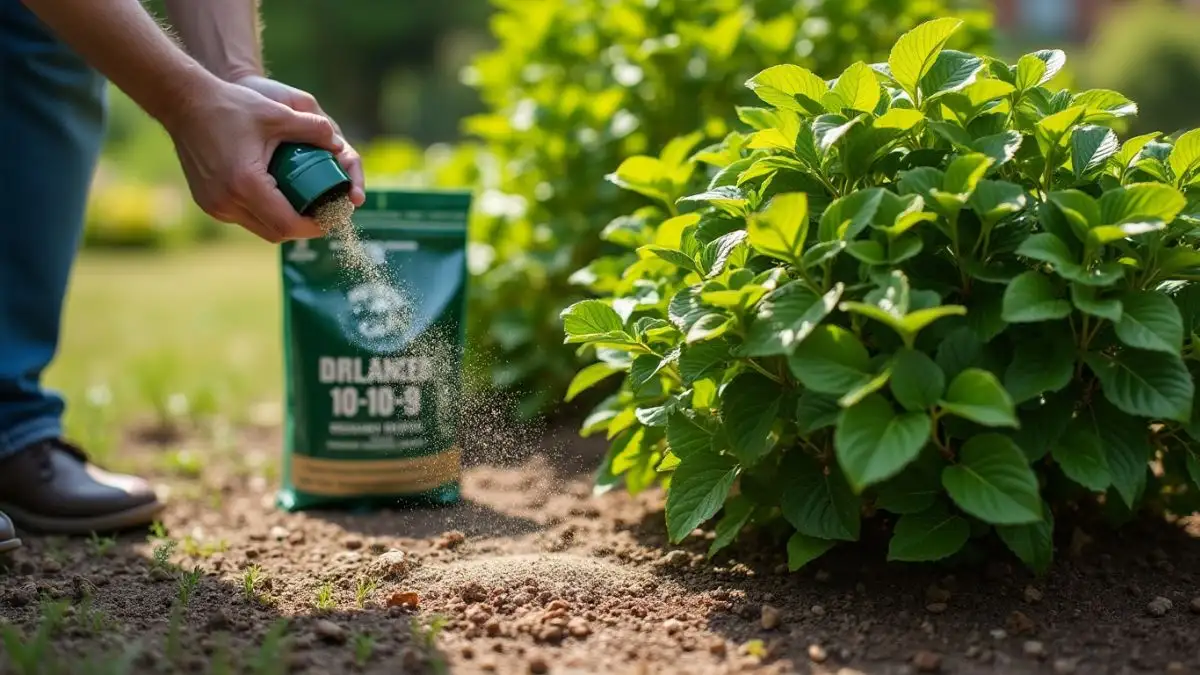
Sweet viburnum benefits from fertilization to support its fast growth and lush foliage.
- When to Fertilize: Apply a slow-release fertilizer in early spring and mid-summer.
- What to Use: Opt for a balanced fertilizer (10-10-10) or one slightly higher in nitrogen for foliage growth.
- How to Apply: Spread the fertilizer evenly around the plant’s drip line, avoiding direct contact with the trunk.
Caring for Your Viburnum Odoratissimum
Seasonal Care Guide
| Season | Care Requirements |
| Spring | Prune for shape, apply fertilizer, and check for pests. |
| Summer | Water during heat waves and monitor for diseases. |
| Fall | Reapply mulch and prepare for cooler weather. |
| Winter | Protect young plants from frost using covers in colder climates. |
Pruning for Health and Aesthetics
Regular pruning encourages dense growth and keeps your viburnum hedge looking neat. Prune after the flowering season to shape the plant and remove dead or diseased branches.
Innovative Ways to Incorporate Viburnum Odoratissimum into Your Garden
Sweet viburnum is incredibly versatile in the garden, offering a range of uses that can suit any landscape design:
- Natural Privacy Screens: Plant viburnum hedges along property lines to create a privacy screen that also adds beauty and fragrance to your yard.
- Fragrant Pathways: Line walkways or garden paths with sweet viburnum to enjoy its delightful fragrance as you stroll through your garden.
- Accent Garden Beds: Use viburnum to provide structure and greenery as a backdrop to colorful flowers and plants.
- Container Gardening: Compact varieties of sweet viburnum can be planted in large containers to bring greenery to your patio, balcony, or entryway.
FAQs About Planting Viburnum Odoratissimum
- How fast does Viburnum odoratissimum grow? It grows 1–2 feet per year under optimal conditions.
- What’s the best time to plant sweet viburnum? Early spring or fall is ideal, avoiding frost or extreme heat.
- How far apart should I plant Viburnum for a hedge? Space plants 4–6 feet apart for dense, even coverage.
- Does Viburnum need full sun? Viburnum thrives in full sun but can also tolerate partial shade.
- How do I prevent pests like aphids and whiteflies? Use neem oil or insecticidal soap and promote healthy airflow around the plant.
- Can I grow sweet viburnum in a container? Yes, compact varieties adapt well to large pots with proper drainage.
- What type of soil is best for Viburnum? Loamy, well-draining soil with a pH of 6.0–7.5 is ideal.
- How often should I fertilize sweet viburnum? Apply fertilizer twice a year, once in early spring and again in mid-summer.
- How do I protect Viburnum in winter? Cover young plants with burlap in frost-prone areas.
- Why isn’t my Viburnum blooming? Ensure it receives adequate sunlight and apply a phosphorus-rich fertilizer.
- How do I know if my Viburnum needs water? Viburnum typically requires water when the top 2–3 inches of soil are dry. Monitor the soil moisture frequently, particularly during hot weather.
- Can I prune Viburnum odoratissimum for a specific shape? Yes! Viburnum can be pruned into different shapes, making it perfect for creating hedges, topiaries, or formal garden features. Just ensure to prune after the blooming period.
- Can sweet viburnum tolerate frost? While Viburnum odoratissimum is hardy to USDA Zones 8-10, it can suffer from frost damage in colder climates. Consider winterizing young plants with burlap or frost cloths.
- Why are the leaves on my Viburnum turning yellow? Yellowing leaves could indicate a nutrient deficiency (especially nitrogen), overwatering, or poor soil drainage. Check your watering habits and amend the soil as needed.
- Do I need to deadhead my Viburnum to promote more blooms? Deadheading (removing spent flowers) is not necessary for Viburnum odoratissimum, as it blooms on old wood. However, removing any dead or damaged flowers will help maintain a neat appearance.
- Can Viburnum odoratissimum be used as a foundation plant? Yes, it makes an excellent foundation plant due to its evergreen foliage and dense growth. It’s great for framing homes or adding a green backdrop.
- What is the best fertilizer for Viburnum odoratissimum? A balanced, slow-release fertilizer with a ratio of 10-10-10 works well. During the growing season, you can use a fertilizer with higher phosphorus content to encourage blooming.
- Can I grow Viburnum odoratissimum in sandy soil? While sweet viburnum prefers loamy soil, it can adapt to sandy soil if amended with organic matter to improve moisture retention and nutrient levels.
- Does Viburnum odoratissimum attract bees and butterflies? Yes! The fragrant white flowers of sweet viburnum are highly attractive to pollinators like bees and butterflies, making it a great plant for supporting local wildlife.
- Can Viburnum odoratissimum tolerate salty air or coastal conditions? Sweet viburnum is moderately salt-tolerant, making it suitable for coastal gardens. However, it still benefits from some protection from strong salt winds.
Conclusion: Transform Your Garden with Viburnum Odoratissimum
By following these 7 incredible tips for planting Viburnum odoratissimum, you’ll be on your way to creating a stunning, low-maintenance garden feature that will thrive for years to come. Whether you’re planting a viburnum hedge or adding a fragrant shrub to your landscape, this versatile plant will elevate the beauty of your garden.
Start planting your sweet viburnum today and enjoy the beauty and fragrance it brings to your outdoor space.


